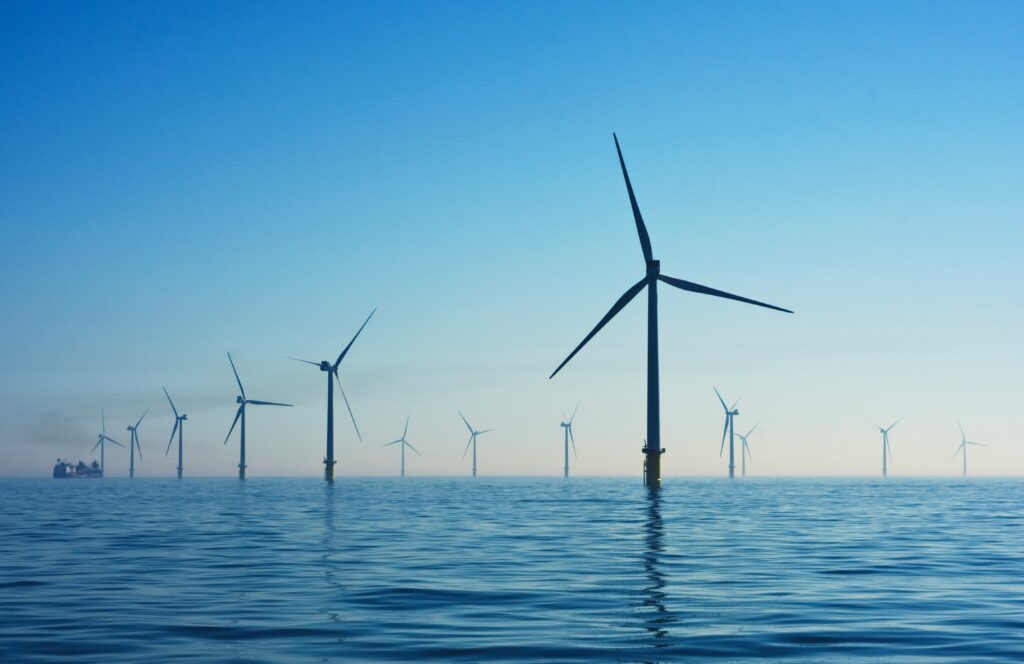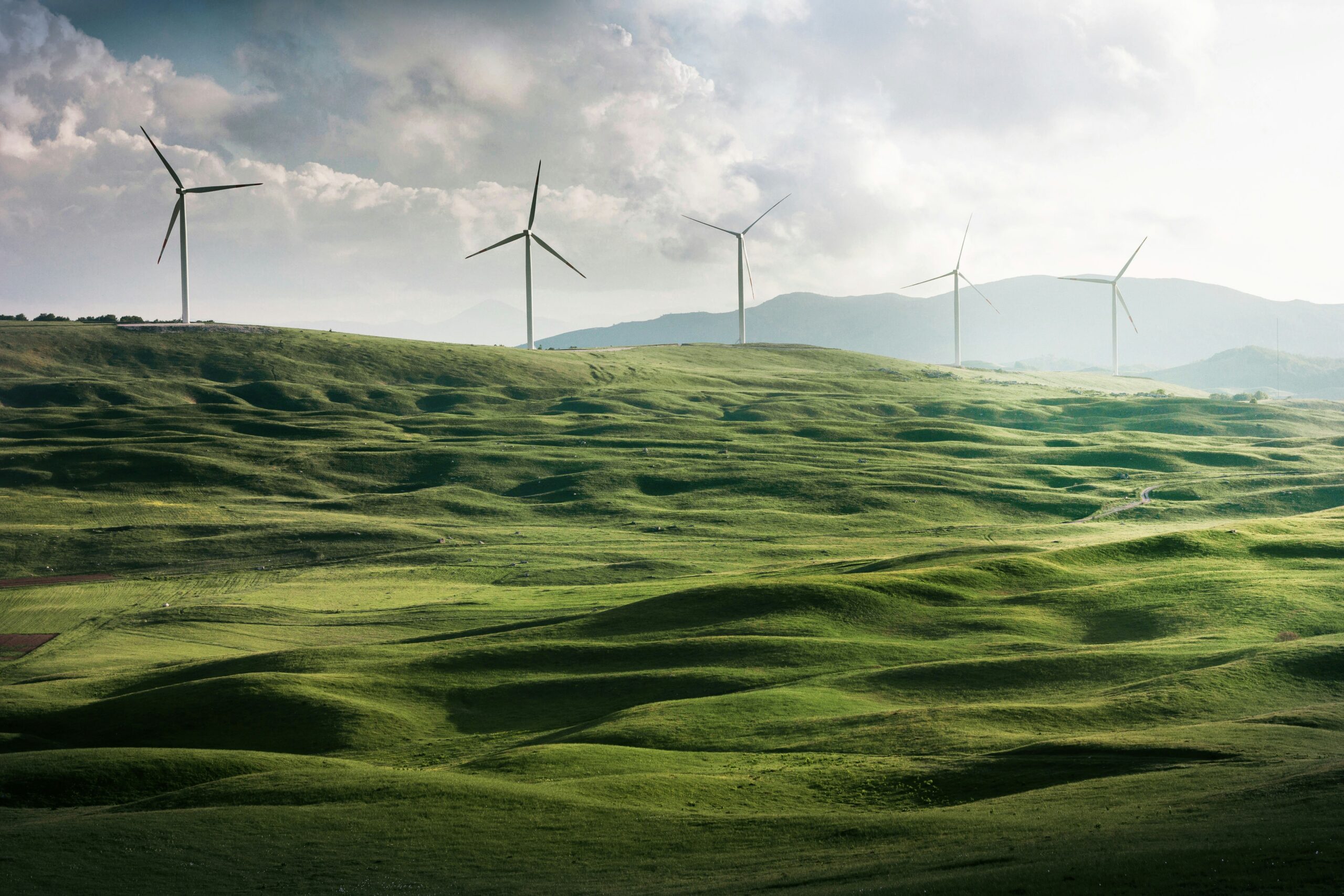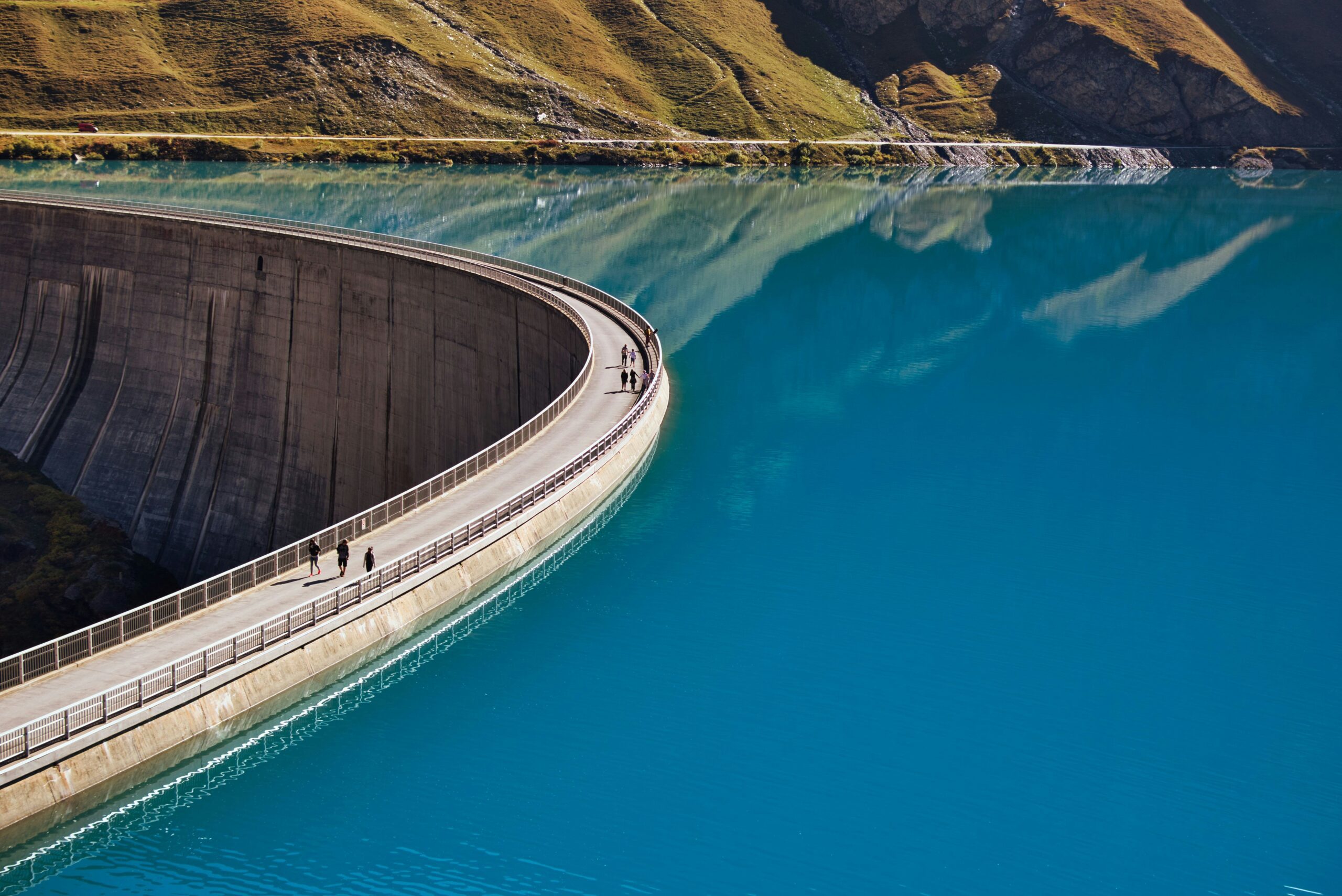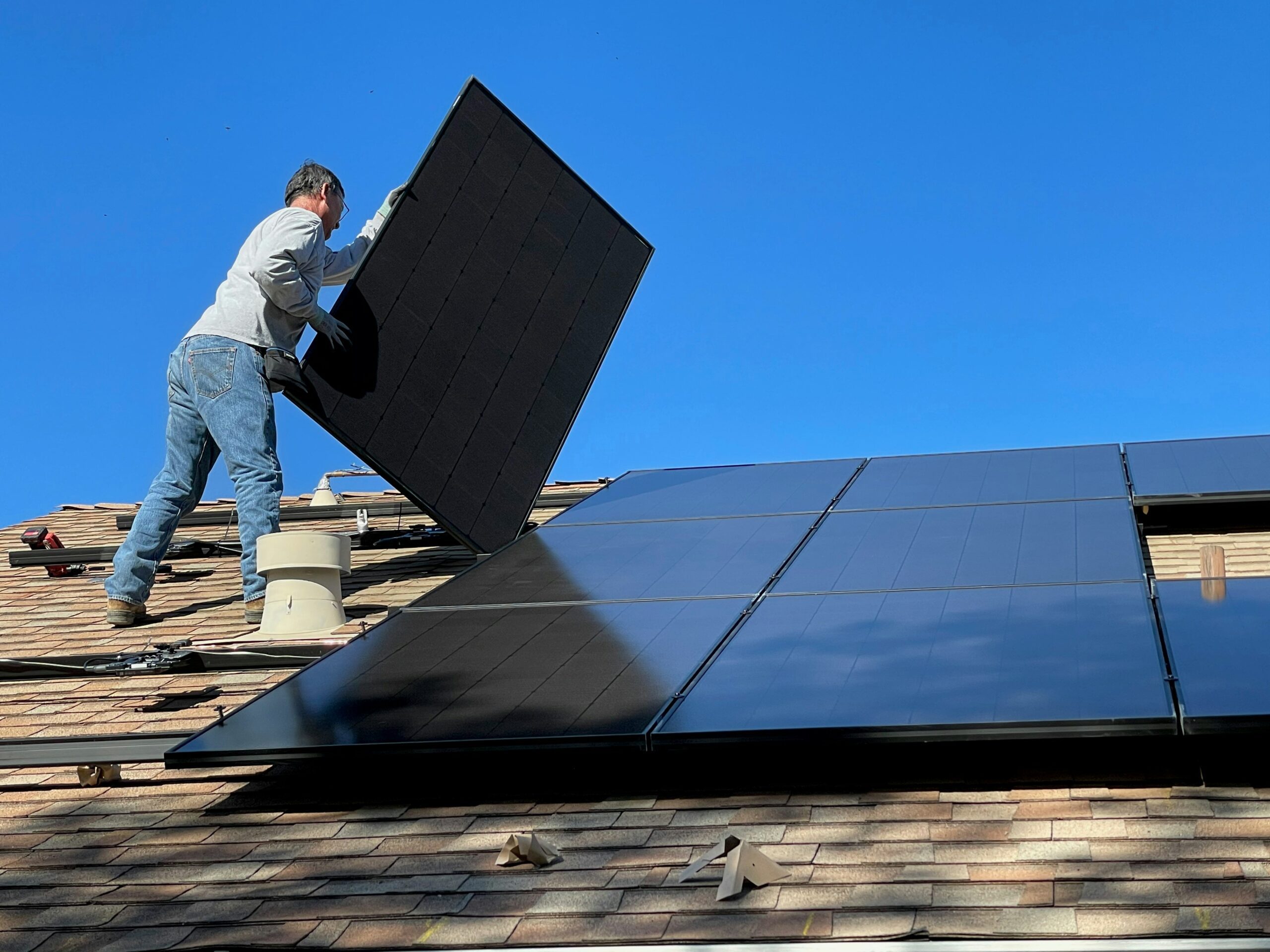Modern wind turbines are complex machines designed to efficiently harness the kinetic energy from wind and convert it into electricity. Here’s an overview of the technology behind them and their efficiency:

Blades: Wind turbine blades are aerodynamically designed to capture the maximum amount of wind energy. They are typically made of lightweight yet durable materials such as fiberglass or carbon fiber. The length and shape of the blades play a crucial role in determining the turbine’s efficiency.
Rotor and Hub: The blades are attached to a central hub, forming the rotor. The rotor is connected to the main shaft, which transfers the rotational energy to the generator.
Generator: The main function of the generator is to convert the rotational energy from the turbine’s blades into electrical energy. Most modern wind turbines use synchronous generators or asynchronous generators.
Yaw System: The yaw system allows the turbine to turn and face into the wind. This ensures that the blades capture the maximum amount of wind energy regardless of wind direction.
Tower: The tower supports the turbine and raises it to a height where wind speeds are typically higher and more consistent. Taller towers enable turbines to access stronger and more consistent winds, increasing efficiency.
Control Systems: Modern wind turbines are equipped with sophisticated control systems that optimize their performance. These systems monitor wind speed and direction, adjust the pitch of the blades, and regulate the generator’s output to maximize efficiency and ensure safe operation.
Power Electronics: Power electronics, such as inverters, are used to convert the electrical output from the generator into a form that is suitable for grid connection. These components also help manage the variability of wind energy and ensure stable electricity supply to the grid.
Efficiency in wind turbines is measured by the capacity factor, which represents the actual energy output of the turbine compared to its maximum potential output over a specific period, usually a year. Factors influencing efficiency include:
- Blade Design: Optimized blade design is crucial for capturing the maximum amount of wind energy.
- Site Selection: Choosing locations with high and consistent wind speeds significantly improves efficiency.
- Turbine Size: Larger turbines with longer blades have higher efficiency as they can capture more wind energy.
- Maintenance: Regular maintenance and upkeep are essential to ensure turbines operate at peak efficiency.
- Grid Integration: Efficient integration into the electrical grid allows turbines to maximize their output and contribute effectively to overall energy supply.
Overall, advancements in technology and design continue to improve the efficiency and performance of modern wind turbines, making them increasingly competitive with conventional energy sources.

Property Owner’s Guide to Wind Assessment
Conducting a wind resource assessment for property owners involves several steps to determine the feasibility of installing a wind[…]

The Environmental Impact of Hydropower
Hydropower, which harnesses the energy of flowing water to generate electricity, has both environmental benefits and drawbacks. Here’s an[…]

The Science of Solar Cells and Continuous Improvement
The science behind solar cells is continually evolving, driven by efforts to increase efficiency, reduce costs, and expand the